My newsletter aims to not only expose corruption, but also to promote creative efforts to combat it. Sometimes, those efforts loom under our noses, remaining widely unappreciated despite growing to the scale of global ubiquity.
No better work of art demonstrates this tendency than Star Wars.
At the same time that the series has grown to colossal proportions—earning over $10 billion across more than a dozen films and a growing body of related content from television shows to an entire amusement park—its legacy has also been watered down, bled of its substantial significance.
Two themes, in particular, emerge from interviews by George Lucas that fans of his creations would do well to remember. Both offer poignant relevance that has only grown in the decades since the first film was released.
Eastern religion for western audiences
No work of art, whether nonfiction or fiction, has exposed the principle tenets of eastern religions to a larger number of casual observers in the West. The character of Yoda especially embodies multiple themes that animate eastern wisdom traditions, and serves as a conduit for their translation to a western audience, represented by the character of the young Luke Skywalker.
First, several of Yoda’s lessons for Luke resemble cues to reject the default behaviors to which most young people in the West are acculturated. For instance, Yoda counsels Luke to discern right from wrong when calm rather than when agitated. He encourages him to focus his attention in the present moment rather than indulge fleeting fantasies and daydreams, and trains him to use his feelings—rather than only his senses—to reach out and understand the world. Each of these lessons finds inspiration in Eastern wisdom traditions.
Aside from the guidance that Luke receives in his training to sense and deploy the Force, the legacy and social role of the Jedi also implicate several principles in eastern wisdom. Guardians of peace & justice who cultivate diplomacy and martial arts as tools to resolve conflict, the Jedi pass on their training to apprentices, forming an intergenerational lineage not unlike those of martial arts traditions.
The role of the Jedi—warrior monks dedicated to preserving peace and defending justice—finds its most close analog in reality in Sikhism, or perhaps the monasteries in which devotees train Shaolin kung fu. Whichever religious or martial tradition on Earth more closely embodies it, that model of warrior-as-public-guardian stands in sharp contrast to the model of warrior-as-mercenary (or alternatively, hitman for oil and weapons companies) that dominates our world today.
A recent murder in New York illustrates the profound difference in these models. Oblivious newspaper journalists wrote story after story praising a 24-year-old former Marine who mercilessly killed Jordan Neely, a homeless New Yorker who worked as a Michael Jackson impersonator, in retaliation for his public expression of anger and frustration prompted by literal hunger.
When I was arrested in the U.S. Senate in 2015, it was in retaliation for asking an Obama administration official how he justified never facing a charge for perjury despite lying under oath to the Senate, when Eric Garner had just been murdered by police officers in New York City who suspected—but never had to prove—that he sold cigarettes without a license.
Entirely too many Black Americans have suffered merciless and brutal murders by supposed public guardians. That continuing trend of unrestrained, often lethal, and usually random violence embodied by public servants across the United States contrasts sharply with an image of warrior priests trained to calmly discern what justice requires in any given instance.
Just to be clear: a defensible system of warrior priests would require impartial judges to oversee them. Given recent remarkable revelations of U.S. Supreme Court Justices disregarding ethics entirely (which I’ve addressed before and plan to do so again), the systemic failures of our so-called “justice” system unfortunately stretch from top to bottom.
Who does the Empire represent?
Star Wars did not only depict eastern religions, but also directly addressed contemporary themes concerning international relations, including the tension between center and periphery, the reliance of resource extraction on militarism, the relationship between dissent and democracy, and particularly, the role of indigenous resistance to Empire.
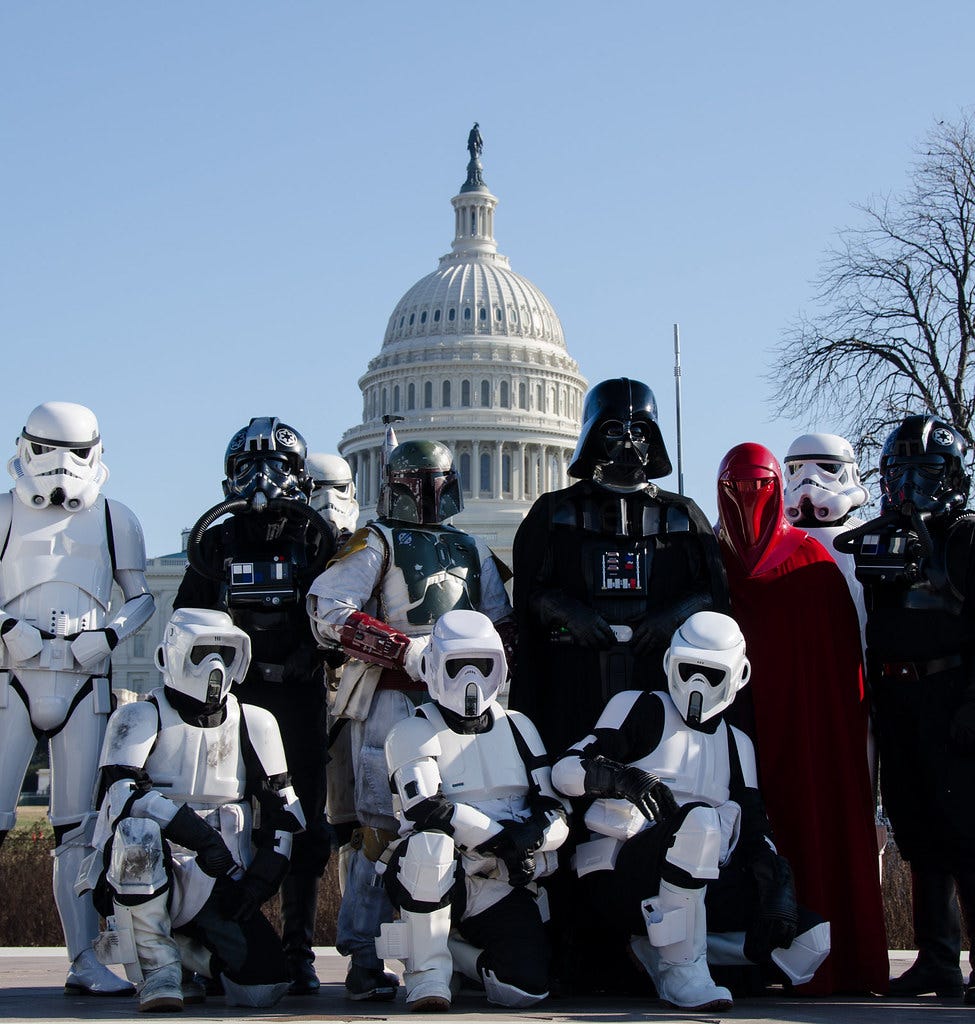
Few Americans appreciate allegory generally, or the roles that the memorable factions in the Star Wars movies were meant to represent.
Luke and his companions struggle mightily against an Empire that Lucas explained he crafted to symbolize the United States and our military industrial complex. Most viewers of the film of course cheer for the protagonists, not recognizing that they themselves likely benefit from the work of their symbolic oppressors.
Lucas himself addressed the symbolism of his first installment in the Star Wars series, Episode IV: A New Hope. In 2005, he explained to the Chicago Tribune that Star Wars “was really about the Vietnam War, and…Nixon…trying to run for a [second] term, which got me to thinking historically about how do democracies get turned into dictatorships? Because the democracies aren’t overthrown; they’re given away.”
Meanwhile, the most heroic characters of the original trilogy were crafted to symbolize the Viet Cong resistance to the American invasion. Lucas stated explicitly that the Ewoks and their successful defense of Endor against imperial invasion was meant to evoke the struggle by the much less technologically sophisticated Viet Cong against the far more well resourced military of the United States.
As far as I know, Lucas did not reference specific events from the Vietnam war in his interviews, but several parallels between the movies and real events are worth noting.
For example, when imperial storm troopers leave an Ewok village in ruins, their roles appear strikingly similar to those American servicemembers who massacred Vietnamese civilians by the hundreds at places like My Lai.
Similarly, when Luke discovers the smoldering remains of his uncle Owen and aunt Bea, his dejection resembles the agony of mourners responding to CIA drone strikes, which have arbitrarily killed over a thousand people around the world. Many of them have felt not only impotent fury, but like Luke, also an enduring animosity for an empire that mouths concerns about peace and human rights while abusing them relentlessly.
Star Wars also depicted reflections of political theory. When Chancellor Palpatine maneuvers his way into the role of Emperor, the Queen of Naboo reflects on the popularity of authoritarian fascism. She observes, “So this is how liberty dies…with thunderous applause.” It is an elegant and succinct explanation for the constitutional separation of powers, judicial supremacy, and the crucial role for counter-majoritarian courts to prevent the tyranny of the majority.
Finally, when Lando Calrissian double crosses Han Solo and his companions to sell them out to Darth Vader, it might be fairly read as foreshadowing America’s contemporary role in the north Atlantic, where—according to the important work of renowned investigative journalist Seymour Hersh—our ally Germany finds itself confronting a fuel shortage caused by an act of international terrorism and Ecocide sponsored by the United States.
Another theme that emerges from the Star Wars movies is the brutality of the Empire, towards even its own subjects and proponents. The arbitrary murder of senior generals by Darth Vader, the casual brutality towards workers, and the destruction of an entire planet simply to prove a point, all illustrate how the United States treats lives as expendable—not only around the world, but also here at home.
As I prepare to relocate away from San Francisco, I am reminded particularly of the ongoing environmental justice calamity at the Hunters Point shipyard site, where the last Black enclave of America’s supposedly most progressive city has been poisoned for decades by the U.S. Navy. Radiation contamination resulting from its role in developing and deploying nuclear weapons against civilians at the end of the Second World War continues to drive a racist public health disaster, several generations later.
Yet, somehow, Hunters Point rarely comes up in polite public discussion, even though San Francisco has recently repeatedly appeared in national news cycles related to crime & justice.
How many stories have you read about San Francisco in the past year? Perhaps you read from national news outlets about San Francisco’s retail thefts, or car break ins, or the election that removed and later replaced our elected District Attorney. Perhaps you read about housing, or technology, or frustrated businesspeople dismayed by the depopulation of our city’s downtown.
How many of them made any reference at all to the fact that the U.S. military poisoned thousands of black San Franciscans, who continue to seek justice for having been subjected to unacceptable conditions prompting asthma rates and breast cancer rates among the worst in the world? In the discussion about the supposed “crime wave” in San Francisco, how do the continuing crimes of the U.S. government somehow escape the list?
Paid subscribers can access below a poem that I wrote about San Francisco’s overlooked history, the myths of our “progressive” city versus its sad reality, and recurring historical waves of public racism ignored by city leaders and most residents. It includes a reference to Hunters Point and the disturbing reality that our local and national leaders care no more about human rights here at home than they do about the human rights of populations abroad that they routinely reduce to cannon fodder.
The bias observable in the selection of topics covered by journalists is itself a scathing indictment of whatever passes for the so-called “free press” in the United States. Ultimately, the most underlying significance of the Star Wars movies is simply the need for the allegory to be presented at all, and its reflection of the continuing ignorance of a civilization seemingly unaware of its devastating impacts across the world, despite their thorough documentation.
In that respect, the Star Wars series has a great deal in common with the Hunger Games, as well as any number of other depictions of dystopia that reflect the oblivious complicity of an imperial center in the harms it heaps not only on those far afield from it, but also those close to home on whom it relies.
The role of satire and allegory in social change
Cognitive dissonance refers to the unfortunate phenomenon of human beings generally rejecting information that does not conform to their established schema. It effectively refers to systematized ignorance that people embrace in order to protect their worldviews, placing the preservation of their peace of mind before the opportunity to better perceive reality.
The fact that cognitive dissonance so predictably impedes rational thinking is part of why creative attempts to diffusing it attain such significance.
If people are too intellectually timid—or simply ignorant—to navigate tension that they discover through prose, they might still remain emotionally open to themes that they discover through poetry. Allegory, in other words, can work around the cognitive biases and blocks that inhibit awareness and systematically encourage ignorance.
If you offer someone a #MayTheFourth salutation today, take a moment and add a further thought or two. Remember that, for now, the Empire that Lucas depicted allegorically remains undefeated, that the people on Earth represented by Ewoks are still being murdered for resources from oil to lithium, and that “a new hope” might turn on each of us finding creative ways to speak truth to power.
Beyond a compelling and fascinating depiction of a fictional world “in a galaxy far, far away,” the Star Wars saga holds crucial, widely overlooked significance for Americans living in the age of our country’s fading global dominance.
While news outlets fail to depict the costs of empire, or how it casually spills blood to fill the plates and pockets of its (either complicit or indifferent) beneficiaries, we can find some counterpoints from Hollywood—even among narratives that we might have overlooked “a long time ago.”
A poem
I wrote this poem as an homage to San Francisco. It feels eerily appropriate as I prepare to relocate after calling the city home for 20 years.
My City, Tis of Thee I Sing (7/22/22)
SF has a reputation for being pretty
although many parts of this city stay gritty
our community renowned as enlightened and free
but San Francisco is as racist as any other city.
The city of the hippies, the beats, LGBT
has a very different thread running through our history.
It might seem like a promised land of milk and honey
but it’s a sadly different story unless you’re rolling in money.
San Francisco is an aristocracy
an entire city one big gated community
mouthing unity while practicing exclusion
destroying Black wealth not in confusion
but by design, ever since eighteen forty nine.
In an earlier time, an imperial fight
transformed overnight to a mining supply site
a place for wild nights funded by seizing rights
and people, from conscripts for ships
to entire communities losing their grips
evictions… Too many quivering lips
empty houses on Airbnb lists
Successive waves of displacement
hatred and avarice
watching Asians shoot themselves on a precipice.
If the Harvey Milk Club were to just wear hoods
It would help their role be more clearly understood.
No need to hide behind self-serving lies
just come out and admit what we all realized:
SF sent a Black VP to DC
proving the point that there’s always opportunity
for people of color even in a racist scheme
as long as you serve the folks who hold the most green.
From the fossil fuel industry to fossils in office
like Feinstein, Pelosi: the industrial complex
enabling every war you can remember
bodies coming home in bags, dismembered
the Hunters Point shipyard superfund site
Toxic waste from a nuclear blight
a legacy of mass destruction of civilians
from Hiroshima & Nagasaki
to the empire’s own minions
The last time Black wealth emerged in in this town
they tore the whole neighborhood down to the ground.
The Fillmore was the center of jazz on the west coast
the Harlem of California. Raise a toast
to a city that can’t walk it’s talk
a city that sold its soul for tech stocks
a community that once was bold, and then locked.
The folks who made it what it was got pushed off the dock.





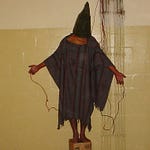

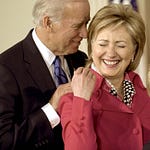
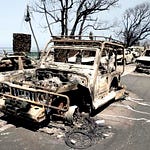

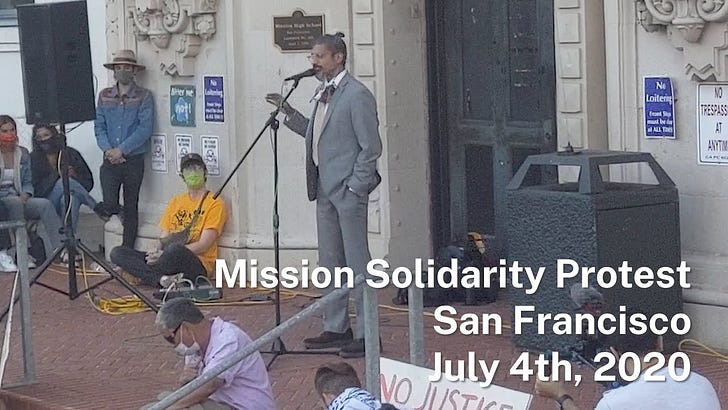
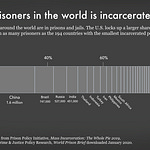

Share this post